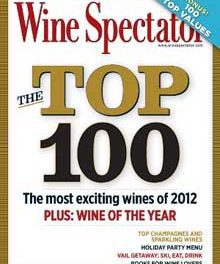There are four approaches to making Rosé Wine. They are Bleeding (Saignee), Pressing, Limited Maceration, and Run-off. Bleeding is used to make the best quality Rosé Wine. Juice is obtained by stacking up the wine grapes in a tank and letting the weight of the grapes do the crushing. Since the juice is in contact with the grape skins for only a very short time, the result is a Rosé that is pale in color. Rosé wines that are made from bleeding are rich, fruity and possess a very real freshness.
Pressing is the technique of pressing the red grapes until the juice has the desired color. (This is the winemaker’s decision.) Only the pressed juice is used to make the Rosé Wine.
Limited Maceration is the most commonly used technique for making Rosé Wines. The skins are left in contact with the juice until the winemaker is satisfied with the color. The juice MINUS the skins is then transferred to another tank to finish the fermentation process.
Run-off is the process whereby the winemaker removes juice from a tank of fermenting RED WINE. The process yields a darker and more intense red wine (The wine that is left in the vat.) and only a so-so Rosé.
In a very general way, that is how Rosé Wines are made. However, each area puts their own twist on the process because the grapes from each area are different. Let’s take a look at some examples. From Spain the grapes that would be predominant to make Rosé would be Grenache and Tempranillo. From Italy the dominate grapes used in the process to make Rosé would be Sangiovese and Cabernet Sauvignon. The US makes Rosé from Blends of Zinfandel, Cabernet Sauvignon, Merlot, and some Malbec. From our friends in France we find that Rosé is made from Mourvedre, Cinsault, and Grenache. Remember, it all depends upon what the winemaker is featuring. Will it be a blend or a single grape selection?
Before the summer gets away from us, let’s try some Rosé Wine. And why not? It is refreshing and carefree in the best possible way. Eric Asimov of the NEW YORK TIMES cautions us not to embrace just anything that is pink. As with all types of wine, the mediocre is more plentiful than the good. However if you love wine and care about what you drink, you can raise your Rosé game by seeking out wines that are made with integrity and care. They probably cost more but what you get are wines that not only dazzle and refresh, but also might welcome some conversation and some notes on tasting. Let’s mention a few and see what we come up with.
The first is Domaine Tempier Bandol Rosé 2013, $44. Rosé is really a labor of love at the Tempier Winery. The manager at this winery located in the south of France is Daniel Ravier. He describes producing Rosé as a balancing act. “You want richness, but not fat. You want structure, but not tannins or too much acidity. You want aromas, but not too much color. Indeed the thrill of a good Rosé is in the balance and Tempier’s Rosé walks the fine line of balance. The grapes used to make the wine are Mourvedre, 55% and the remaining 45% is split between Cinsault and Grenache. Bandol Wines are available in Low Country.
Shinn Estate, located on the North Fork of Long Island, makes a terrific Rosé Wine that carries flavors of watermelon, strawberry, and raspberry. Try this wine with your next lobster roll. $16. Order on the internet. Shinn Estate can ship to South Carolina.
The third Rosé that I would like to bring to your attention is a favorite of mine. It is Chapoutier Belleruche Cotes-du-Rhone. This is a wine that is produced in the Rhone using mainly Grenache and some Cinsault and Syrah. The wine is produced using the “Pressing” method as described above. This a versatile wine that can be enjoyed with many outdoor barbecue preparations, most shellfish; as well as later on in the year with poultry recipes such as roast chicken with herbs, roast turkey, and duck confit. The wine can be purchased locally in retail stores for approximately $12.99. This Rosé Wine is also available in several local Lowcountry restaurants.
WINESPEAK
I enjoy revisiting Rosé Wines from time-to-time. The big thing that I found out this time was that Rosé Wines are coming to us earlier in the year (well before the start of summer) and staying around later after the summer has past. I have a daughter that lives in Paris. She enjoys wine shopping with her Husband. Of all the many shopping trips that she has taken, she noticed this year that the store front displays were dominated by Rosé Wines. We both assume that the French Retailers were showcasing wines that have improved, are more integrated into French Cuisine, and fit well into budgets at any level. Here in the US Rosé Wines did receive an extra push in stores and restaurants. If you happened to be shopping for Rosé Wines in the local area, I am sure you noticed that they are quite affordable. Enjoy the rest of the summer.







